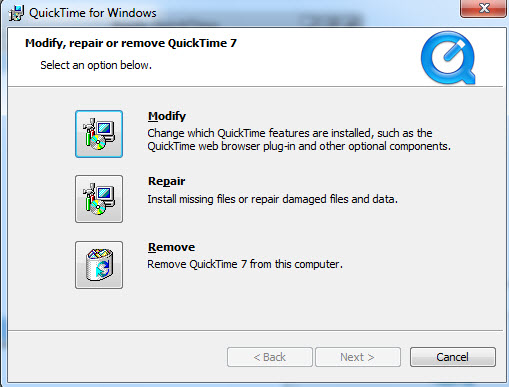Quicktime for Windows soon to be deprecated: is it the end of an era, or has it been a long time coming?
Another piece of software history is about to join Adobe Flash, Windows XP, and Java 6, in the exponential mop-up of 1990s bloatware memorabilia, brought proudly by HTML5, the mobile revolution, and the latest waves of ransomware, which has wiped out enough hard drives worldwide, that users are getting too scared to even sneeze too close to a flash drive they didn’t buy.

Quicktime for Windows, Apple’s proprietary media player port to Microsoft’s operating system, traditionally bundled with iTunes and Safari, will no longer be supported by Apple. In addition, Antivirus maker Trend Micro, and the U.S. Department of Homeland Security are issuing warnings in regard to the recently deprecated Quicktime for Windows, in reference to two high-security threats that hackers can exploit, to gain complete control of a remote computer.
Apple has recently discontinued security updates to Quicktime for Windows, which triggered Trend Micro’s Zero Day Initiative, which requires the company to notify the public of software that is no longer being supported.
The Hey-Day of Quicktime for Windows was during the mid 1990s, a time when CD-ROM’s were all the rage, as the entertainment industry, and even glossy magazines, would frequently produce interactive presentations, created using authoring tools like Macromedia Director, whose video assets would often require Quicktime Player, for video content to play on PCs.
Subsequently, the popularity of Quicktime subsided as other alternative video formats took precedence, coincidental to the inception of MPEG-4, as a more portable format across Macs and PC's.
Unfortunately, the problem with proprietary video formats is that they require special encoding software to play them, at it still often happens when trying to play video files from older CCTV DVR’s.
In this sense, we could say that Quicktime Player for Windows has long lost its purpose, considering that native playback of most popular video formats is supported by Web browsers, thanks to HTML5.
Fast-forward to 2016, it would be wise to follow Trend Micro’s advice and remove Quicktime for Windows from your system, to eliminate the chance of your system to be affected by potential security flaws that could let malware in.
Tu uninstall Quicktime for Windows, here is a few simple steps to follow, whether you are using Windows 7/8 or Windows 10:
- Vista or Windows 7
- Start Menu
- “Control Panel”
- “Programs”
- “Programs and Features”
- “QuickTime”
- “Uninstall”
How To Uninstall QuickTime on Windows 8.1
- Windows 8.1
- Start Menu
- Control Panel
- Programs
- Programs and Features
- “QuickTime”
- “Uninstall”
How To Uninstall QuickTime on Windows 10
- Windows 10
- Win+I
- “System”
- “Apps & Features”
- “QuickTime”
- “Uninstall”